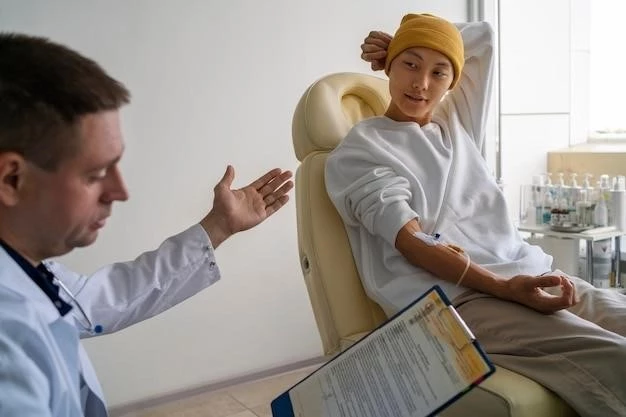Introduction
Reflex Sympathetic Dystrophy Syndrome (RSDS), also known as Complex Regional Pain Syndrome, is a chronic pain disorder affecting limbs․
Definition of Reflex Sympathetic Dystrophy Syndrome
Reflex Sympathetic Dystrophy Syndrome (RSDS), also known as Complex Regional Pain Syndrome (CRPS), is a chronic pain disorder that typically affects an extremity, causing severe and continuous pain that may spread․ The condition is associated with abnormalities in the sympathetic nervous system and can result in various physical manifestations such as tenderness, swelling, changes in skin temperature and color, as well as alterations in sweating patterns․

Symptoms and Diagnosis
Referred to as Complex Regional Pain Syndrome, this chronic pain disorder is characterized by severe and continuous limb pain․
Common Symptoms of Reflex Sympathetic Dystrophy Syndrome
Reflex Sympathetic Dystrophy Syndrome (RSDS) presents with symptoms such as severe burning pain, tenderness, swelling, changes in skin temperature, discoloration, and altered sweating patterns in the affected limb․ The pain is continuous and may worsen over time․
Diagnosis and Diagnostic Criteria
Diagnosing Reflex Sympathetic Dystrophy Syndrome involves evaluating clinical signs such as intense burning pain, skin changes, and abnormal sweating patterns․ Physicians often rely on physical examination, medical history, and imaging tests to confirm the presence of the condition․
Causes and Risk Factors
Research suggests that Reflex Sympathetic Dystrophy Syndrome may occur after trauma to limbs or brain injuries․
There is evidence to suggest that Reflex Sympathetic Dystrophy Syndrome can be triggered by trauma to the limbs or brain injuries, leading to abnormalities in the sympathetic nervous system and resulting in chronic pain․
Identified Risk Factors for Developing the Syndrome
Risk factors for developing Reflex Sympathetic Dystrophy Syndrome may include trauma-related injuries, surgeries, and conditions affecting nerve or blood vessel functions․ Certain brain injuries are also associated with the onset of the syndrome․
Treatment Options
Medical treatments and therapies like physical therapy aim to manage the chronic pain associated with Reflex Sympathetic Dystrophy Syndrome․
Possible Causes of Reflex Sympathetic Dystrophy Syndrome
Research indicates that trauma-related injuries, surgeries, nerve or blood vessel conditions, and specific brain injuries are potential triggers for the development of Reflex Sympathetic Dystrophy Syndrome, leading to persistent pain and neurological abnormalities․
Physical Therapy and Alternative Therapies
Physical therapy plays a crucial role in managing Reflex Sympathetic Dystrophy Syndrome by improving mobility and reducing pain․ Alternative therapies like acupuncture and relaxation techniques may also complement conventional treatments to alleviate symptoms․
Complications and Prognosis
Complications of Reflex Sympathetic Dystrophy Syndrome may include chronic pain, mobility issues, and potential psychological impacts․ Learn more․
Potential Complications Associated with Reflex Sympathetic Dystrophy Syndrome
Complications of Reflex Sympathetic Dystrophy Syndrome may include chronic pain, mobility issues, psychological impacts, and the development of conditions such as infection, ulcers, chronic edema, dystonia, and myoclonus․ While treatments can help manage symptoms, complete resolution of the condition may not be achievable․
Prognosis and Long-Term Outlook for Individuals with the Syndrome
The long-term outlook for individuals with Reflex Sympathetic Dystrophy Syndrome varies, with some experiencing chronic pain, mobility issues, and potential psychological effects․ Treatment can help manage symptoms and improve quality of life․

Research and Ongoing Studies
Recent studies explore Reflex Sympathetic Dystrophy Syndrome, focusing on effective treatments and potential breakthroughs․
Current Research Efforts on Reflex Sympathetic Dystrophy Syndrome
Recent research focuses on understanding effective treatments and advancements in managing Reflex Sympathetic Dystrophy Syndrome to enhance patient outcomes and quality of life․
Participation in Clinical Trials and Future Directions
Individuals affected by Reflex Sympathetic Dystrophy Syndrome have opportunities to participate in clinical trials exploring novel treatments and potential advancements in managing the condition․ These trials aim to enhance understanding and improve outcomes for individuals with the syndrome․
Support and Resources
Access organizations offering support for individuals with Reflex Sympathetic Dystrophy Syndrome and find educational resources․
Organizations Providing Support for Individuals with Reflex Sympathetic Dystrophy Syndrome
Organizations such as the Reflex Sympathetic Dystrophy Syndrome Association offer valuable support and resources for individuals affected by the condition․ These organizations play a crucial role in providing education, assistance, and a sense of community for those managing Reflex Sympathetic Dystrophy Syndrome․
Available Resources for Education and Assistance
Various educational resources and support services are available to help individuals affected by Reflex Sympathetic Dystrophy Syndrome understand the condition better, access necessary assistance, and connect with a supportive community for holistic management․
Prevention and Lifestyle Management
Learn about strategies to prevent Reflex Sympathetic Dystrophy Syndrome and lifestyle modifications to manage symptoms․
Strategies for Preventing the Onset of Reflex Sympathetic Dystrophy Syndrome
Preventing Reflex Sympathetic Dystrophy Syndrome involves prompt and appropriate treatment of injuries, surgeries, and nerve-related conditions to minimize the risk of developing this chronic pain disorder․ Early intervention and proper management of underlying conditions are crucial in preventing the onset of Reflex Sympathetic Dystrophy Syndrome․
Lifestyle Modifications to Manage Symptoms and Improve Quality of Life
Implementing lifestyle modifications such as stress management techniques, regular exercise, maintaining a balanced diet, and getting adequate rest can help individuals with Reflex Sympathetic Dystrophy Syndrome better manage their symptoms and improve their overall quality of life․ Additionally, techniques like mindfulness and relaxation practices can aid in coping with chronic pain and enhancing well-being․
